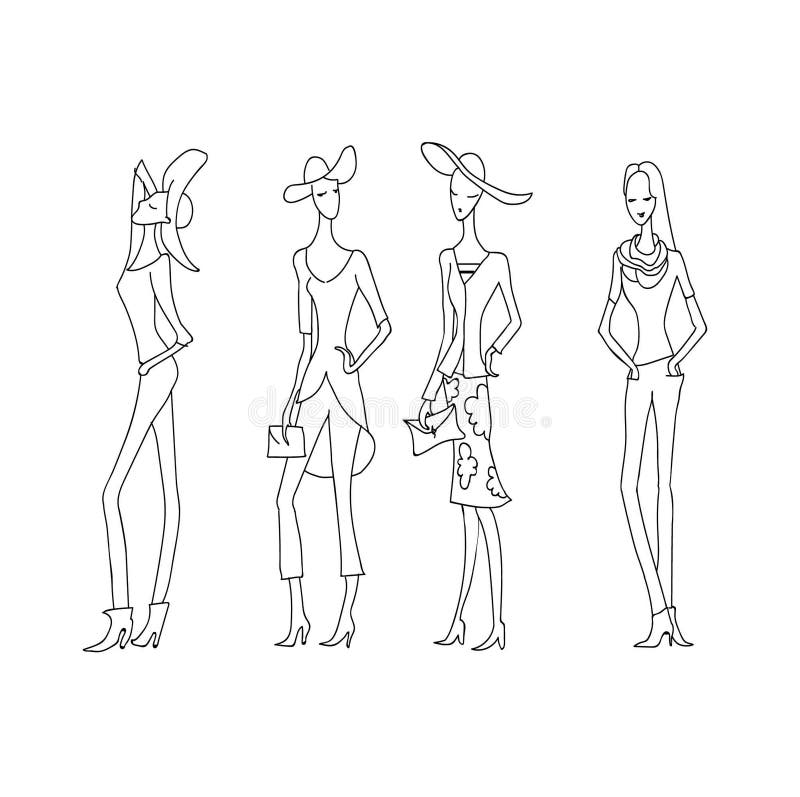

When your business makes a physical product, you need to source the materials to make it.

The Bill of Materials (BOM) is a list of raw materials to produce a garment and prepare it for shipment. Avoid shading and use plain black and white sketches to clearly represent your design.īill of materials Example of a Bill of Materials Don't point out a detail in your Tech Pack that isn't visible on your sketch!ĭifference between illustration and a fashion flat sketchĪdd details to your sketches but don't overcomplicate things.

A solid line on a garment typically represents a seam line, while a dashed line represents stitching. This requires that every seam, dart, stitch, and button be in place. Omitting parts of your sketch will only make it more difficult to explain your design to the factory. These usually include diagrams with labeled arrows pointing out collars, plackets, cuffs, fastenings, bar tacks, and artwork placement.īe thorough and pay close attention to detail. It’s important to write down any details about the garment which are not obvious in these sketches. Including many vantage points such as side views, inside labels and other details makes it easier for your manufacturer to see how the garment should be constructed.
Sketch fashion big women professional#
Here are some tips to create professional flat sketches for your Tech Pack: Making sure you have a complete garment or accessory sketch before starting your Tech Pack is essential. That’s why they are done in black and white and are typically created on Adobe Illustrator.
Sketch fashion big women how to#
They help your factory and pattern maker visualize how to make the first sample look as close as possible to your desired look. Technical sketches (also called fashion flats) illustrate every design detail from different angles (front, back, side, and yes, even inside). But here's a list of the most common information included in a typical garment Tech Pack.

The information included in a Tech Pack is subjective to the type of product and its design. If any of those deviate away from your specifications you can tell your manufacturer and they can make the necessary changes.Ī Tech Pack can be transformed from a mere document to a collaborative environment where designers, product developers, buyers, and quality control planners work together to create better products faster. It's a reference point for quality controlįor every round of samples, you’ll have to check its points of measurements, materials, and construction details. This gives you room to adjust accordingly and significantly improves fit quality. You can compare these actual measurements to the initial measurements in the table and check whether the particular dimensions are within tolerance. When a fit sample is received from the manufacturer you can add a custom column, called Fit Sheet, and register the actual measurements. The more detailed your Tech Pack is, the easier it will be for your factory to gauge how much time it will take to make your product and, thus, how much it will cost. It helps with an accurate price quotation Here are some of the reasons why Tech Packs are a must-have when creating any fashion product:Ī comprehensive and easy-to-read Tech Pack helps you get error-free samples that match your original vision. The Tech Pack also serves as a master document to track product development including comments, revisions, and any last-minute changes. The ultimate goal of a Tech Pack is to minimize the number of samples made and bring a product to market faster. A Tech Pack minimizes risk for both the manufacturer and the designer, by clearly setting out what the desired specifications are for the future product. When it comes to outsourcing garment production, most contractors and factories will not take your orders unless you provide a clear and detailed Tech Pack. It serves as a blueprint of a final garment that includes information like detailed flat sketches of the design, materials to be used like trims and labels, measurement specs, size gradings, colorways, etc. A Tech Pack, also known as specification sheets, is a set of documents created by designers to explain their design to a manufacturer so that they can turn this information into a finished garment.


 0 kommentar(er)
0 kommentar(er)
